I’ve spent a fair amount of time over the last couple of weeks trying to understand why I haven’t been able to concur with the widespread opinion, shared in quite a few listicles just like this, that 2023 was a particularly exceptional year for movies. I’m not saying it’s been a bad one, certainly, as much of the text below will bear out. But throughout the fall, I frequently found myself in a state of disappointment, attending film after film that was proclaimed, before or after, as yet another masterpiece, only to find myself merely appeased (The Holdovers, Poor Things, The Zone of Interest, May December) or even dissatisfied (The Killer, Saltburn, The Iron Claw). Why couldn’t I join my critical colleagues in what seemed a perpetual state of cinematic euphoria?
And then I finally figured it out: my favorite film of the year is so good, so far above the fray, that once I saw it for the first time in late September, everything thereafter paled in comparison. It was simply a superior achievement to every other film in every other way, and that was that.
I’m not usually this kind of a reductionist, to be clear, and I’m not pleased about it — but hopefully it will go away soon (I did love Wonka, so there’s that). In the meantime, here’s my list of my top ten favorite movies of 2023, along with some also-rans and some discoveries, followed by a similar variety of lists and commentary from some of our wonderful contributors here at Crooked Marquee.
JASON BAILEY’S FAVORITE MOVIES OF 2023
10. Priscilla
Few recent matches of filmmaker and material are more inspired than Sofia Coppola and Graceland; she’s always been a master of conveying texture, tones, and vibes, and from the opening images (of carefully manicured toes in shag carpeting), she’s squarely in her wheelhouse. She can convey multitudes in a single image or a cut; her montages and compositions convey so much about the loneliness and melancholy of Elvis Presley’s child bride, and the severity of his emotional game-playing. We only see “the King” as Priscilla does (not making music, not making movies), and she wouldn’t say much, so she doesn’t; in the title role, Cailee Spaeny crafts a spectacularly non-verbal performance, vividly putting across the character’s longing, excitement, discontent, and (in the best drive-away closing shot since Jackie Brown) determination.
9. Anatomy of a Fall
The opening line of Justine Triet’s thorny Palme d’Or winner is “What do you want to know?” It’s a casual question, at the beginning of a semi-formal interview, but it becomes the key inquiry of this riveting drama; it is asked by Sandra Voyter (Sandra Hüller, staggering), a novelist whose husband dies a few minutes into that grabber of an opening. He fell from a high window, so maybe he killed himself, or maybe he was pushed by his wife; Triet pointedly does not tell us, and Hüller’s performance is similarly enigmatic, creating quiet yet searing suspense throughout the investigation and trial that follows. Acting is tip-top across the board, not just from Hüller but from young Milo Machado Graner as her son, who has secrets and reserves of his own.
Andrew Haigh writes and directs this evocative, melancholy mash-up of romantic drama and semi-surreal memory play. Andrew Scott (who is so good, you’ll follow him any wild place Haigh takes him) stars as a writer who is attempting, in his new screenplay, to grapple with his childhood and the loss of his parents at age 17; on a trip to his hometown, he finds himself inexplicably spending time with them, via vivid visions and candid conversations in which he works through his complicated feelings about them. The years melt away as the interactions and support he so badly needed are grafted onto his past, a fiction less painful than fact. Simultaneously, he’s embarking on a relationship with a neighbor (Paul Mescal) who’s young and wild and probably not good for him in the long run, but exactly what he needs at the moment, and this is a movie that understands that value of both. As it winds up to the home stretch, All of Us Strangers becomes a film about itself — about making art to fix your life, your past, and your pain.
7. Are You There, God? It’s Me, Margaret
Judy Blume waited over 50 years to sell the film rights to her beloved pre-teen novel, and there’s some danger in adapting it now; the book was so wildly influential that though there hasn’t been an official film adaptation, plenty of movies have stolen from it. Yet screenwriter/director Kelly Fremon Craig (The Edge of Seventeen) finds exactly the right approach to the text, retaining the 1970 setting and the vivid (sometimes cringe-inducingly so) portraiture of middle-school life. The characters are keenly defined, and everybody gets an arc—not just Margaret (a wonderful young actress named Abby Ryder Fortson) but her mother (the always-excellent Rachel McAdams), father (Benny Safdie) and grandmother (Kathy Bates). What sets this one apart are all the little character touches and narrative details most teen/tween movies don’t even bother with; it’s smart, it’s sensitive, and sometimes it just breaks your heart.
6. Oppenheimer
If The Dark Knight was Christopher Nolan doing a Michael Mann movie, this is his riff on ‘90s Oliver Stone— like JFK or Nixon, it’s a big, bombastic historical epic, with the director orchestrating an all-star cast and a striking bag of cinematic tricks. Cillian Murphy turns in an admirably knotty performance as J. Robert Oppenheimer, father of the atomic bomb, and Nolan thankfully eschews the cradle-to-grave biopic structure; instead, he zeroes in on a handful of key moments throughout his life, and moves between them freely and often ingeniously to create a complex portrait of a complicated man. It feels less like a biopic than an exploration of big ideas and unfathomable processes.
5. Perfect Days
It’s been a minute or two since Wim Wenders had a narrative feature worth talking about, but you cannot count that guy out, and his latest is sweet and seemingly simple, and then not that, at all. Koji Yakusho stars as Hirayama, who spends his days doing the honest and earnest work of cleaning toilets in Tokyo’s public parks — and it tells you all you need to know about him that he not only takes pride in this work, but enjoys it. When work is done, he’ll take some photos, or read, or ride his bike, or go out to dinner; he lives a life of familiarity and routine, and much of Perfect Days lives that life over his shoulder. But disruptions eventually present themselves, of course, though not in any kind of pat or predictable way, and it speaks highly of both Wenders’s filmmaking and Yakusho’s acting that they are able to hint at the pieces of his life that he chooses not to dwell on without prying them out of the character. They simply seem to care about him too much to impose.
4. Menus-Plaisirs Les Troisgros
When you describe Frederick Wiseman’s work to those who don’t know it, it sounds insufferable; he makes loooooong films about institutions and processes, with extended scenes of meetings and planning and execution, but rarely with the kind of clean, identifiable conflicts that are the lifeblood of contemporary non-fiction filmmaking (to say nothing of its redheaded stepchild bastard offspring, reality TV). There’s none of that here; much of Troisgros’ expansive running time is spent on scenes of watching people prepare food. And it’s riveting, intricate processes of exacting, meticulous detail, without even the crutch of music — they’re scored only by the pleasant hum of minimal movement and very occasional, hushed chatter. Wiseman’s films are about the pleasures of watching pros work, and his latest is proof positive that at 93, he is still a singular artist, each film a rare and spectacular gift.
3. Eileen
William Oldroyd’s adaptation of Ottessa Moshfegh’s novel is two great movies in one. The first half or so is a gin-soaked slice of sinful pulp, in which a dissatisfied 24-year-old prison clerk (Thomasin McKenzie, revelatory) finds her senses awakened by the splendidly named “Dr. Ms. Rebecca St. John,” played by Anne Hathaway in straight-up blonde bombshell mode, sporting Marilyn hair, and smoking cigarettes the way bad women used to smoke them in movies. You see that hesitation and confusion in the panic that overcomes Eileen when Rebecca invites her out for a drink after work, and we can be certain of one thing: in some sense or another, Eileen is in trouble. That trouble arrives in the form of a spectacular third act 180, a first-rate bait-and-switch, and in the hands of a lesser filmmaker, and a less accomplished cast, it could’ve absolutely gone to shambles. But that’s not what happens here at all; Eileen pulls off the transition from teasing fatalism to something much doomier, and does it with panache.
2. Past Lives
Celine Song’s feature debut tells a simple story, of two people who knew each other when they were children, reconnected in college and fell into something like love, and have now met again, when one of them is married. The particular majesty of this very modest film is how it tells a story that’s strikingly specific in its particulars, but it tells that story so insightfully and personally that it becomes universal. Not all of us have been that girl (the marvelous Greta Lee), or that guy (a marvelously nuanced Teo Yoo), or the other one (John Magaro, embodying an impossibile role with ease). But we’ve all loved someone when it was too late, or questioned the choices we’ve made, or wondered what our lives would be like if we’d done this one little thing differently. And it’s that universality — along with the sensitivity of the performances and offhand ease of the dialogue — that makes it such an overwhelmingly, devastatingly emotional experience.
Like his previous picture, the similarly sprawling and magnificent The Irishman, Marin Scorsese’s latest is great in a fashion that seems particularly tied to his age and experience. He could not have made these films at 30, or 50, or 60. This is the work of a man who has now spent six decades making great movies, for whom that act has become something like second nature; if the 10,000 hours theory is correct, then few filmmakers have spent as much time making, and urgently thinking about, movies. That ease, that expertise, that skill is on display in every one of Killers’ 206 minutes. The scope, the scale, the ambition — no other filmmaker is doing it like this, and that’s all there is to it.
HONORABLE MENTIONS: Stamped from the Beginning, Godland, Rye Lane, El Conde, The Innocent, Fallen Leaves, A Still Small Voice, A Thousand and One, Ferrari, Barbie, Asteroid City, Blackberry, The Starling Girl.
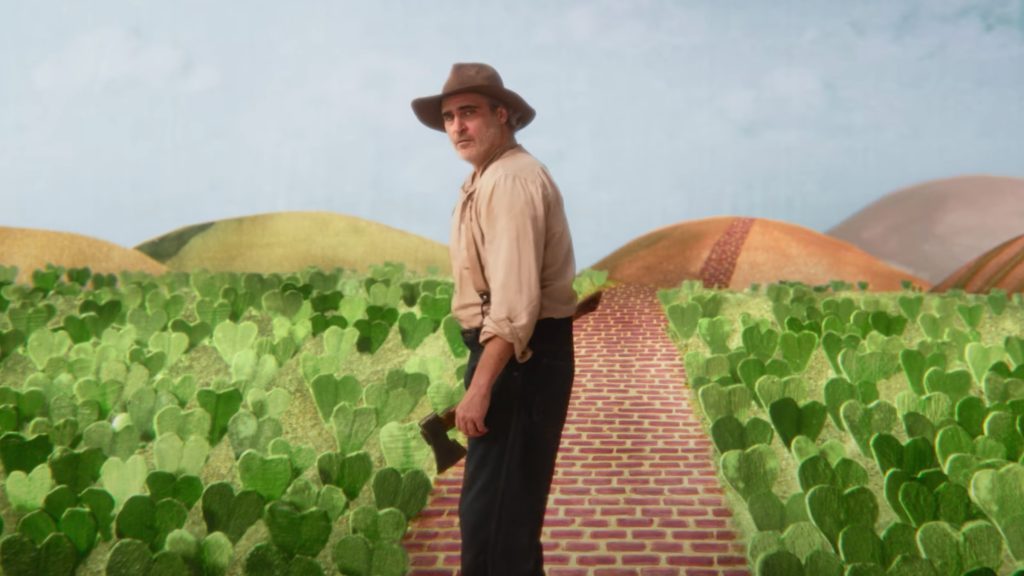
BILL BRIA’S TEN BEST FILMS OF 2023:
10. The Killer
He was looking for a job, and then he found a job. Heaven knows he’s miserable now. David Fincher’s satiric aim, unlike his titular assassin, never misses.
9. Napoleon
Sir Ridley Scott plows Bonaparte-like ahead where so many prior filmmakers have bailed, his penchant for bitter, misanthropic satire and easy hand at staging massive war sequences in tow. Not the Napoleon movie everyone wanted, but the one we (and he) deserve.
8. Theater Camp
2023 was a fantastic year for studio comedies, so while No Hard Feelings and Bottoms will continue to be discovered and cherished, I’m compelled to throw a spotlight on this consistently hilarious, inventive, utterly charming underdog of a movie. For all theatre kids past, present, and future.
The John Wick series made a point out of topping itself with each installment, so this final (?) entry is appropriately phenomenal: a summation of action cinema as well as a fitting, mythologically weighted ending for the titular character and his tragic “If You Give a Mouse a Cookie” quest.
6. Asteroid City
A masterclass in proving that the artificial — the Brechtian theatrical, the sci-fi genre, the distancing effect of a movie camera — can be a remarkably precise tool to delve deep into the rawest human emotions. Would that we could all express them this perfectly.
5. Killers of the Flower Moon
Between this epic and The Zone of Interest, the banality of evil has rarely been more expertly depicted. A movie that both operates like and is about snakes in the grass.
4. Godzilla Minus One
While 2023 proved Hollywood could still make blockbusters out of historical dramas, Japan proved with this film that they could make a remarkably moving and thrilling genre melodrama. Talk about firing on all cylinders!
3. May December
In acting as in life, we’re all looking for the skeleton key to understand others as well as ourselves. What if that key turns out to be broken, or even falsified? What if there is no answer to our collective pathology, no matter how many takes we’re given to get it right?
2. Oppenheimer
The man who sold the world. A movie that contains such enticing elements as courtroom drama, backroom political conspiracies and scientific theory turning into horrifying reality, yet Christopher Nolan blending all of that into a riveting three-hour epic may be its most impressive aspect.
It’s hard to think of too many other films where the lines get blurred this thoroughly: between the subjective and the objective, the hilarious and the horrifying, the self-indulgent and the universal. Easily the most unforgettable and daring wide release of 2023.
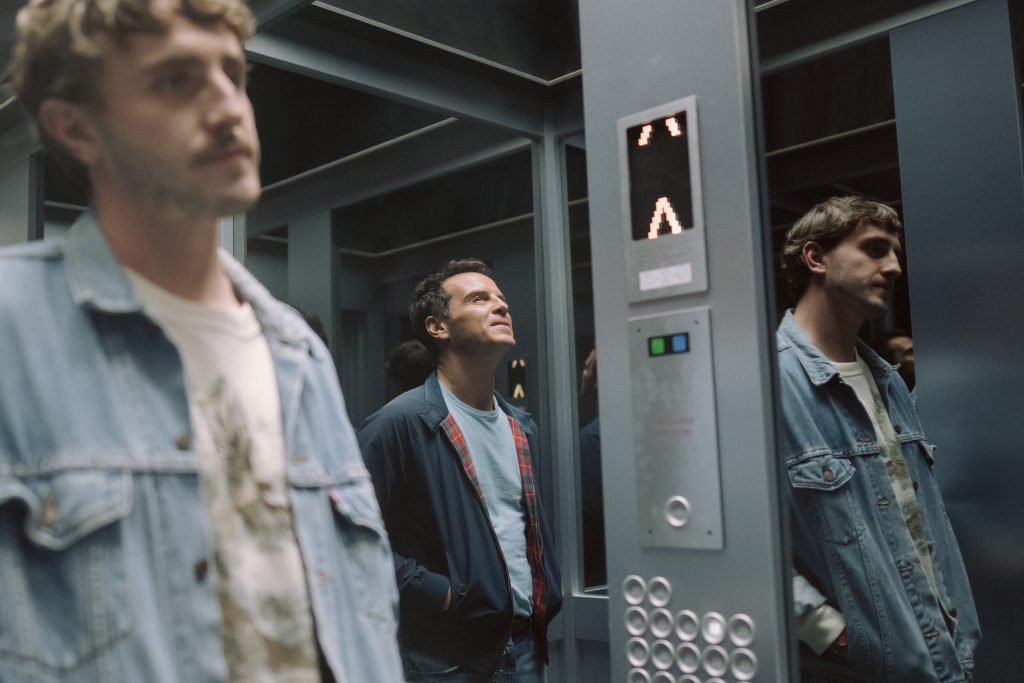
CRAIG J. CLARK’S 10 BEST FILMS OF 2023:
10. Smoking Causes Coughing
A left-field choice for anyone’s top ten, but this was my first opportunity to see one of French auteur Quentin Dupieux’s surreal mini-epics on the big screen and its tale of a superhero team sent on a retreat to work on their group cohesion was the perfect antidote to a decade’s worth of cape fatigue. Plus, it’s funny (and occasionally gross) as hell.
9. The Boy and the Heron
Hayao Miyazaki’s latest comes a decade after his last feature, when he announced his retirement. Based on the vitality and sheer inventiveness of this film, I’m glad that didn’t stick.
8. Showing Up
One of my favorite scenes of the year comes partway through Kelly Reichardt’s ode to working artists, chief among them Michelle Williams’s prickly Lizzy. In spite of her frustration with her landlord Jo’s failure to fix her hot water, when Lizzy checks out Jo’s latest exhibition, she can’t help but be transported by the work. It’s a small moment that says everything about the power of art to make all other concerns seem insignificant.
7. Asteroid City
Art and artifice are likewise at the forefront of Wes Anderson’s current feature, as well as the quartet of Roald Dahl shorts he made for Netflix. With his ever-growing repertory company, it’s easy to wonder how all of his actors could possibly make an impression, but the characters he comes up for them to play (in tandem with frequent collaborator Roman Coppola) are distinctive enough that he pulls it off.
6. Poor Things
5. Beau Is Afraid
Two films that wore their ambition on their sleeves, sending their stunted protagonists on hyperstylized journeys of self-discovery. Whereas Emma Stone’s Bella eventually finds her place in the world, though, Joaquin Phoenix’s Beau was pretty much fucked from the moment of conception.
4. Anatomy of a Fall
Thanks to France’s… let’s call it unique judicial system, this is one courtroom drama that doesn’t get bogged down when it gets to the courtroom.
3. The Zone of Interest
Set in the literal shadow of Auschwitz, this film slowly reveals who its characters are, how they live, and who works for them. Jonathan Glazer’s follow-up to Under the Skin doesn’t humanize its monsters so much as put them under a microscope, revealing how the normalization of war atrocities in one’s daily life rots from within.
2. All of Us Strangers
Another contender for scene of the year is the one where Claire Foy as the protagonist’s long-dead Mum sings along with Pet Shop Boys’ rendition of “Always on My Mind.” Just devastating.
1. Killers of the Flower Moon
William Hale is quite possibly the most despicable character Robert De Niro has ever played, which is truly saying something.
Bonus Scene of the Year:
While Alexander Payne’s The Holdovers is necessarily focused on the respect that grows between Paul Giamatti’s gruff private school teacher and Dominic Sessa’s entitled student, Da’Vine Joy Randolph’s Mary is its true heart. Still, when the three of them leave campus midway through and drop Mary off at her sister’s, it would have been so easy to wave goodbye to her on the doorstep and let the others move on without another thought. Instead, Payne and screenwriter David Hemingson stay with Mary long enough to let her get settled, giving the character (whose personal loss eclipses the inconvenience experienced by the others) a private moment to reconnect with the only family she has left. More than the period trappings, it’s moments like these that place The Holdovers in the rarified company of the ’70s classics it emulates.
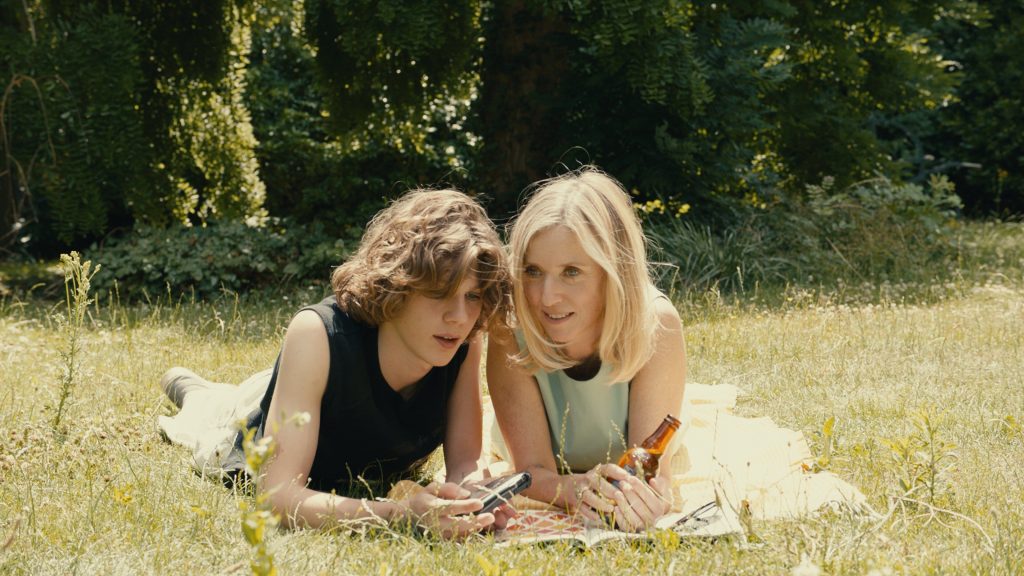
JULIA SIRMONS’S 10 BEST FILMS OF 2023
With this list, I’m assuming that you’ve all already seen Barbie, Oppenheimer, and Killers of the Flower Moon. I’m hoping to boost some smaller films, and make some suggestions from festivals that will get distribution in the year to come.
10. All of Us Strangers
A strange charm veils the world in this magical realism–esque ghost story. A gay man stumbles upon the spirits of his parents (who died in a car crash when he was young), living in his childhood home. The scenario – accompanied with a budding romance with a young neighbor – could trip into the saccharine at any moment. It doesn’t, due to the incredible performances: Claire Foy and Jamie Bell seem to accept their ethereal nature with a cheerful acceptance with matter-of-fact contentment. The scenes between the three seem remarkably grounded, even as mother and father struggle with some of their parenting mistakes. Andrew Scott, as the son, is a marvel, meeting the wonder of his situation with a contagious warmth.
9. The Pigeon Tunnel
Errol Morris’ latest documentary became the epitaph for its subject, the author David Cornwell, known by his pseudonym John le Carré. (Cornwell died in 2020.) The often tacit, thorny questions about a documentarian’s relationship to their subject comes to the fore with a character like Cornwell. Cornwell, himself a skilled interrogator thanks to his time in the secret service, can give just as good as he gets. Morris does hit some of Cornwell’s soft spots: his disillusionment following the defection of double-agent Kim Philby, and most importantly, Cornwell’s tangled relationship with father, a con man of astounding proportions. But the true attraction here is the dance between Morris and Corrnwell as each man goes back and forth on the nature of truth, a nagging question that drives both to riveting dialogues.
8. Fallen Leaves
A flawless little gem. Kaurismäki finds a way to make a quotidian plot swell with emotion, as two people living very ordinary lives (a grocery stocker and a construction worker) stumble into an unlikely meet cute. Their charming yet fragile romance illuminates how much love can add sparkle to even the most quotidian existence. Visual economy and a straightforward plot carefully steers clear on any schlock, and if we suspect that we’re ultimately heading toward a happy ending, it’s a well-earned one.
7. May December
Put aside the debate about whether it’s “camp”or “melodrama.” Here we’re watching Todd Haynes, who has a long history of experimentation with forms and genres, and turning them into clinical, almost forensic facades. He gets that dread and distance are the only way you can truly see this creepy, mystifying true story. The approach needs performers whose passions and confusions simmer below breezy exteriors. Julianne Moore and Portman are adept in traversing these layers, while Charles Melton is captivating as a man first blossoming into introspection.
6. The Feeling That the Time for Doing Something Has Passed
Director Joanna Arnow has made something like a Girls episode with darker lows and rougher edges. Arnow plays the protagonist Ann, who seems halfheartedly accepting of a drab world and a somewhat drab, less than fulfilling personal life. She maintains the same stony expression as Buster Keaton through a variety of humiliating experiences: her boss telling her she’s too talented for her job, her dad serenading her with Union songs, BDSM scenes where one master wants her to dress up as a pig. Ann’s radical acceptance of her everyday reveals our ridiculous, unfulfilling norms of pleasure and labor, and the all-too real ambivalence to even gesture toward seeking change.
5. La Chimera
There’s no one like Alice Rohrwacher for capturing the spiritual, almost shimmering atmosphere that captures the Italian landscape, and even its history. Themes of enchantment, the mysteries of ancient cultures, and death swirl around this period piece where gangs rob Etruscan tombs to sell the artifacts to buyers from other countries. A British man, (Josh O’Connor, in a mostly silent, ethereal role) seems to have a divine gift for finding the ruins. Rohrwacher captures many idiosyncrasies and wonders, including Isabella Rossellini in a bit part as a Little Edie–esque owner of a crumbling palazzo that attracts a cast of characters. Earthly life and the spiritual world are both full of possibilities in Rohrwacher’s world of charms and delight.
4. Anatomy of a Fall
A taut, exquisitely crafted courtroom drama. Tension (and the audience’s ire) mounts as the evidence seems to merely indict a female defendant because she’s not acting the way women are “supposed” to behave in unimaginable situations. The magnetic Sandra Hüeller delivers the many (perhaps too many) facets of the accused: haughty pride, numb dissociation, and a carefully-maintained facade just barely concealing crumpled with exhaustion. But just once you think the plot is zigging, it hits us with a major zag. The smoking gun is not really any physical evidence. What could damn Sandra is more a chilling portrait of a just of a slightly-more-than unhappy marriage. And that’s the true horror: the possibility that these mostly normal complaints could draw a couple to the edge, and tip into crime and destruction. .
3. Janet Planet
Like Rochrwacher, acclaimed playwright Annie Baker captures the air and texture of a place and time. In her first film, Baker summons a humid, leafy New England summer. Just as magically, she captures the pivotal time between fifth grade and middle school. This delicate, poignant moment comes vividly to life through the careful, contemplative eyes of 11-year-old Lacy (played by the astonishing Zoe Ziegler). As the melancholy Lacy (both younger and wiser than her years) tries to put away childish things, she’s still held in thrall by her mother, the captivating Janet. As she meets the many people in Janet’s orbit, Lacy quietly but certainly realizes that the adults aren’t in charge. Soft but pointed when it needs to be, this is a breath of fresh all with many slow, wondrous revelations.
2. Asteroid City
Not much to add here, except to express my delight that Anderston is endearing a more mediated aspect of his world through various kinds of theatre performance: the televised play, a frustrated actress, and a Method-heavy atmosphere on screen and in rehearsals. This terrain is so rich: as one moves within the other, Anderson nails, with elegant precision, the authenticity that can only emerge through aesthetic framing.
1. Last Summer
Provocateur Catherine Breillat has made her first film in a decade, and boy does she come out with guns blazing. The topic is predictably risqué, at a common porn scenario: a seemingly contented haute bourgeois lawyer starts a sexual relationship with her husband’s son from a previous marriage. On one level, this works an arch, ironic version of that porno fantasy, lurid and superficial.. But on another–without spoiling too much– it’s an all too real look at how attraction, however unlikely or unwise, builds in the smallest moments and spaces. It wouldn’t be Breillat if there wasn’t a stark and cynical look at the cruelties of spent desire, and the ways power will always try to reassert itself. And, even in a dappled, bucolic summer atmosphere, no one ever gets out unscathed.
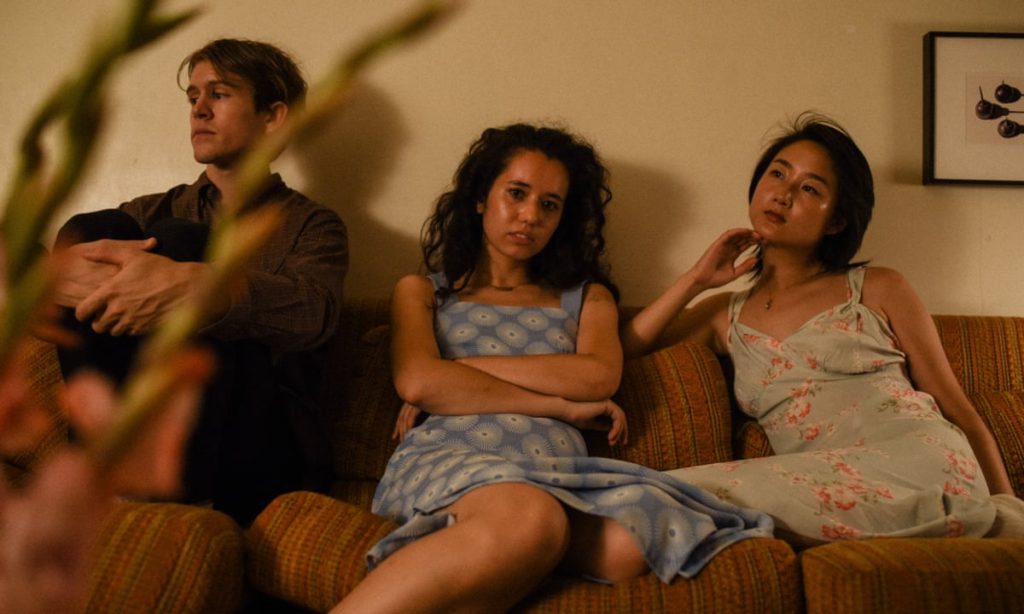
JOSH BELL’S 10 FAVORITE VODEPTHS FILMS OF 2023
1. Actual People
The spirit of mumblecore lives on in the debut feature from writer/director/star Kit Zauhar, a raw, emotionally resonant character study of a woman waiting for her ‘real life’ to begin, while she’s been living that life the entire time.
2. Daughter
Usually the presence of Casper Van Dien isn’t a promising sign for a low-budget movie, but he’s impressively menacing in writer-director Corey Deshon’s assured, unsettling debut feature.
3. August at Twenty-Two
Writer Ali Edwards gives a funny, charming performance as a recent college graduate flailing about romantically and professionally in New York City.
4. Acidman
There are no melodramatic revelations or overwrought confrontations in this intimate father-daughter drama starring Thomas Haden Church and Dianna Agron, just two people quietly unpacking their feelings, often in meaningful silence.
5. Ashkal: The Tunisian Investigation
Tunisian director and co-writer Youssef Chebbi’s moody crime drama is eerily mesmerizing even without a full understanding of the context.
6. Are You Lonesome Tonight?
The suspense and the anguish combine for an evocative, rewarding existential thriller in Chinese filmmaker Wen Shipei’s stylish, noir-influenced debut feature.
7. Erin’s Guide to Kissing Girls
Starting with its title, writer-director Julianna Notten’s teen dramedy is a cute, upbeat take on queer romance, focusing on personal relationships rather than coming-out angst.”
8. Surrounded
This austere Western from music video director Anthony Mandler is a two-hander between stars Letitia Wright and Jamie Bell, whose fierce arguments are every bit as thrilling as the periodic gunfights and chase scenes.
9. The Dive
The majority of The Dive is gripping, capitalizing on a basic human fear as an undersea diver becomes trapped under fallen rocks with dwindling air.
10. Blood, Sweat and Cheer
The concept here isn’t much different from other Lifetime-esque Tubi originals, but director Traci Hays approaches it with a sly sense of humor that turns a suburban-mom-gone-wrong melodrama into a campy, candy-colored dark comedy.
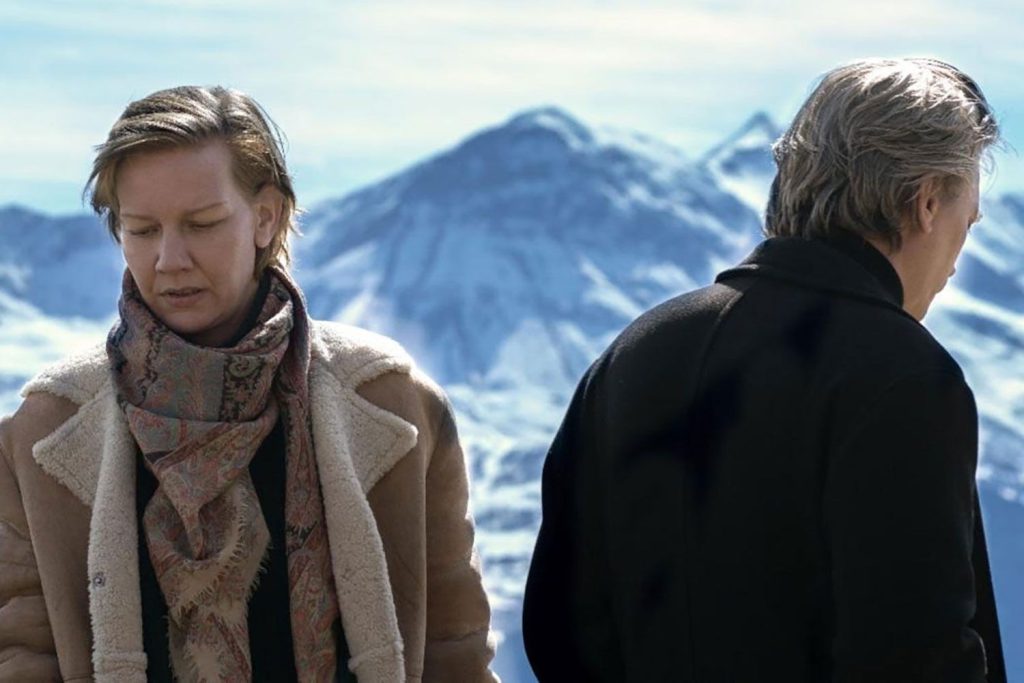
MARSHALL SHAFFER’S TOP 10 SCENES OF 2023
It was a year full of great movies, of course. I’m still in the agonizing process of ordering my top 10 films and figuring out “what it all means.” But those preliminary trains of thought have led me to realize how many of the monumental moments within them run on parallel tracks. I’m presenting my favorite scenes of the year as a series of couplets, highlighting where great artistry employed different storytelling tactics to portray similar thematic preoccupations.
- Anatomy of a Fall, The Fight
- R.M.N., Town Hall
A funny thing happens when our private thoughts and behaviors become a matter of public discourse. Justine Triet presents a couple’s brawl as a subjectively constructed battle of wills in Anatomy a Fall, while Cristian Mungiu forces his audience to stare objectively at a fixed frame of a civic meeting that descends into a xenophobic frenzy in R.M.N. A breach is crossed in each of these scenes as the way that characters present and who they are collapses in on each other before the camera’s eye.
- Asteroid City, Margot Robbie at the stage door
- May December, Reading Gracie’s Letter
Some things in life — grief, trauma, and longing, to name just a few pinpointed by Wes Anderson and Todd Haynes — are simply too complex to understand on their own terms. Humans need to turn these experiences and emotions into stories to make sense of them. Climactic monologues in both Asteroid City and May December show the transformation of reality into fiction over the course of a single speech. Two of our finest actresses use their moment in the spotlight to make a compelling case for the necessity of narrative for the soul’s survival.
- Barbie, Sitting at the Bus Stop
- Oppenheimer, Can You Hear the Music
The skeleton keys to Barbenheimer lie not in their most conventional displays of grandeur — a Gene Kelly-style musical interlude, an atomic bomb test detonation. Instead, their purposes shine brightest in what might otherwise appear to be montages of mundanity. Oppenheimer learns his place in history by absorbing the pinnacle achievements of modernity, setting him up to fulfill and demolish those ideals. Meanwhile, Barbie gets her fullest glimpse of what was made for by observing everyday humanity from the perch of a bus stop. Greta Gerwig and Christopher Nolan reveal the most about what their protagonists mean by placing them in direct contact with ideas that challenge their notions of what it means to be alive. Because they do so, it expands our conception in turn.
- Maestro, Cathedral Conducting
- Mission: Impossible – Dead Reckoning Part 1, Train Finale
Look, I didn’t even like Maestro, but even I can appreciate when a performer is granting audiences a glimpse at their artistic mechanism operating at full steam. The agony and the ecstasy of acting reared its head with all its beauty and bombast in two scenes of capital-A Acting with an exclamation point. Bradley Cooper, one of his craft’s most eager disciples of the Method, finally achieves the emotional transference that otherwise eludes him in Maestro through a bravura scene of borderline possession as Leonard Bernstein in his element behind the podium. That same spirit sees physical expression in Tom Cruise’s stunt work as Ethan Hunt eludes death through multiple falling rail cars in rapid succession. The death-defying action, which harkens back to the high-stakes cinema of Buster Keaton in its inventiveness, provides an exclamation point on a Mission: Impossible entry.
** SPOILER ALERT **
- Killers of the Flower Moon, Radio Drama
- The Zone of Interest, Auschwitz Museum Flash-forward
Two audacious portraits using cinematic recreation to portray historical evil end up coming to a similar conclusion on how to shatter the illusion that imagery is just imagination. Martin Scorsese and Jonathan Glazer both puncture the bubble of their hermetically sealed domes of horror by forcing viewers to confront the fiction. Rather than give a winking fourth-wall break, they opt to ram their captive audience against that wall. By foisting themselves into the present, Killers of the Flower Moon and The Zone of Interest force the question of whether we’re using cinema to understand tragedy — or merely avoid it.
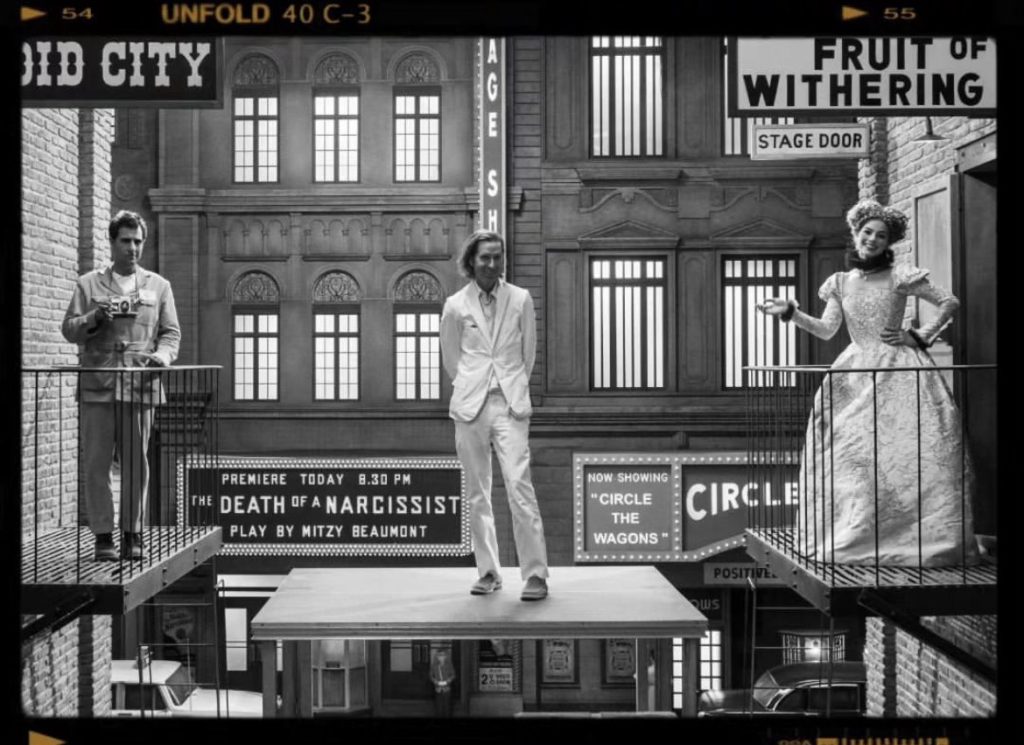
ANNA McKIBBIN’S 10 BEST PERFORMANCES OF 2023
10. Margot Robbie, Asteroid City
Robbie’s defining moment of 2023 was her sparkly turn in Barbie, but her best performance was her single scene in Wes Anderson’s theatrical take on grief and growing up. It is a beautifully restrained moment, her words seeping out in painful gasps. This one scene holds the film hostage, before releasing it to flourish in its final act.
9. Emily Blunt, Oppenheimer
Her testifying scene is the heart of this sprawling epic. The collective gasp and surprised giggles that swept across the audience in the moment when she turns the tables on Jason Clarke’s interrogator remains a high point in cinema-going for me.
8. Beyoncé, Renaissance: A Film by Beyoncé
This isn’t technically a performance in the traditional sense, but in many ways Beyoncé The Person’s performance as Beyoncé The Performer is the definitive piece of acting in 21st century pop culture. By the end of Renaissance it is impossible to determine when (if, at all,) she has dropped the mask. This is a fully embodied magic trick, the kind that leaves you dazzled by someone’s onscreen star power.
7. Ilinca Manolache, Do Not Expect Too Much From the End of the World
Ilinca Manolache’s Angela is fiercely determined, a workaholic who is perpetually leant over her car’s steering wheel, screaming into her phone, firing back demands at her boss. The camera is trained on her, patiently crawling through the day as the pressure of contemporary life bears down on her.
6. Vivian Oparah, Rye Lane
This romantic comedy drew attention for its gorgeous rendering of London, but Raine Allen-Miller deserves more praise for finding and directing her two leads. Vivian Oparah and David Jonsson’s performances are wondrous, somehow capturing that city in this year, while channelling an old school movie star chemistry.
5. Charleen McClure, All Dirt Roads Taste of Salt
The plot of Raven Jackson’s debut feature is splintered across time, capturing the Mack’s life in warm-hued facets. Charleen McClure’s work is purely physical, thrilling in its realism and nearness.
4. Natalia Solián, Huesera: The Bone Woman
Following in the long line of horror films that draw on the violence of pregnancy, Huesera: The Bone Woman still finds new ways to terrify its audience. Natalia Solián’s depiction of Valeria on the verge of motherhood, is gripped by an encroaching, bodily pressure, that never dissipates.
3. Cailee Spaeny, Priscilla
Spaeny’s depiction of the infamous Priscilla Presley is beautifully subdued, avoiding the normal pitfalls of biopic acting. Her wide-eyed vulnerability is the perfect vehicle for Sofia Coppola’s preoccupation with the rich internal lives of teenage girls.
2. Teyana Taylor, A Thousand and One
Lean and laser-focused, Teyana Taylor’s embodiment of Inez in the coming-of-age drama is singular. Her all-encompassing presence colors every corner of every frame, defining this version of New York. She is the luminous centre of every scene.
1. Lily Gladstone, Killers of the Flower Moon
While I attempted to use this list to draw out some lesser-lauded performances from 2023, Gladstone’s carefully heartbreaking depiction of Molly Kyle is too striking to ignore. The all-encompassing grief at losing her sisters ripples across her face, sitting on her shoulders. Gladstone follows the legacy of women in Scorsese’s pictures who are manipulated by the violent patriarchs they are subjected to, and somehow redefines the archetype.
KIMBER MYERS’S 10 BEST FILMS OF 2023
10. The Zone of Interest
9. Rye Lane
8. Barbie
7. Past Lives
6. Are You There God? It’s Me Margaret
5. The Holdovers
4. The Taste of Things
3. All of Us Strangers
2. Killers of the Flower Moon
1. Poor Things
WILL DIGRAVIO’S 26 BEST FILMS OF 2023
Thirteen non-documentary films from the “commercial cinema” that resonated with me this year, in alphabetical order:
Anatomy of a Fall
Creed III
Ferrari
Godzilla Minus One
Killers of the Flower Moon
Maestro
May December
Oppenheimer
Passages
Past Lives
Showing Up
The Color Purple
The Settlers
Thirteen avant-garde and documentary films that resonated with me this year, in alphabetical order:
Darkness, Darkness, Burning Bright
Kokomo City
Little Richard: I Am Everything
Nam June Paik: Moon is the Oldest TV
Miss Me Yet
Pictures of Ghosts
Praying for Armageddon
Rewind & Play
Still Life
The Apocalyptic Is the Mother of All Christian Theology
The Eternal Memory
The March on Rome
Where Do You Stand, Tsai Ming-liang?
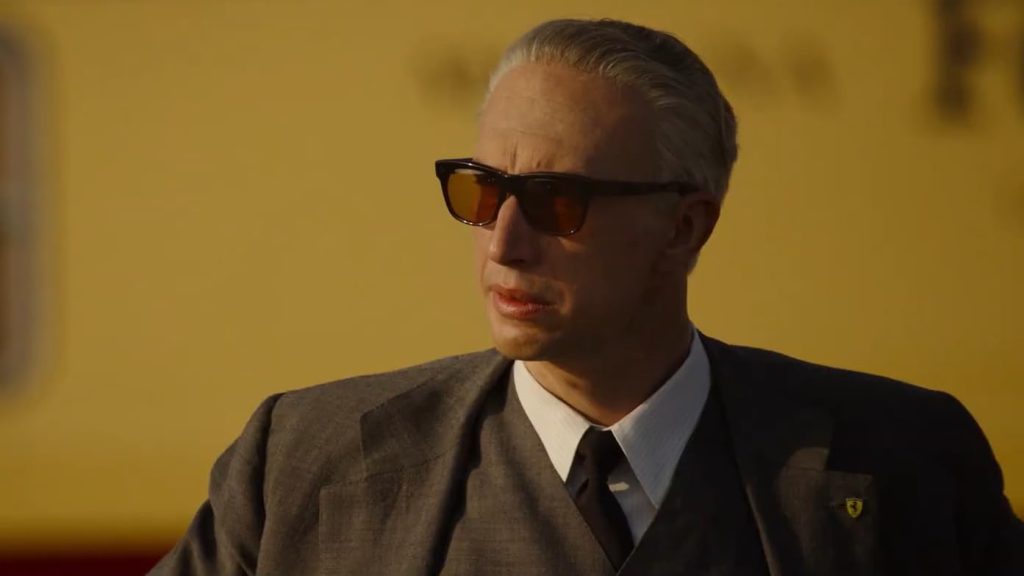
EDWIN ARNAUDIN’S 10 BEST FILMS OF 2023
It took putting a Best of 2023 list together for me to realize how lucky moviegoers were this year. We were gifted new films from so many masters and up-and-coming talents including Mann, Scorsese, Nolan, Fincher, Miyazaki, Wenders, Gerwig, Aster, DuVernay, Friedkin, John Carney, Schrader, Kaurismaki, Kore-Eda, Lanthimos, Payne, Sofia Coppola, Reichardt, Haynes, Errol Morris, and TWO Wes Anderson projects. Plus, if it wasn’t for the strike, we’d have new Villeneuve, Jeff Nichols, and Linklater.
1. Ferrari
2. Killers of the Flower Moon
3. Oppenheimer
4. The Holdovers
5. Past Lives
6. Asteroid City/The Wonderful Story of Henry Sugar/The Rat Catcher/The Swan/Poison
7. The Killer
8. Beau is Afraid
9. Poor Things
10. Perfect Days
SARA BATKIE’S TOP 12 DISCOVERIES OF 2023
Living in a mid-size Midwestern city means a lot of my most anticipated releases haven’t made it here yet. So rather than send an incomplete Best of 2023 list, here are my 12 favorite first watches of the year, along with how I viewed them:
1. This is Not a Burial, It’s a Resurrection (d. Lemohang Jeremiah Mosese) – Criterion Channel
2. T.R. Baskin (d. Herbert Ross) – Fun City Editions Blu-Ray
3. Cria cuervos (d. Carlos Saura) – Criterion Channel
4. Drowning By Numbers (d. Peter Greenaway) – Severin Films Blu-Ray
5. The Girls (d. Mai Zetterling) – Criterion Channel
6. Moonlighting (d. Jerzy Skolimowski) – Criterion Channel
7. The Watermelon Woman (d. Cheryl Dunye) – Kanopy
8. Millenium Mambo (d. Hou Hsiao-hsien) – Kino Lorber Blu-Ray
9. The Act of Killing (d. Joshua Oppenheimer) – Hulu
10. Jacquot de Nantes (d. Agnes Varda) – Criterion Blu-Ray
11. The Executioner (d. Luis Garcia Berlanga) – Criterion Channel
12. La Grande Bouffe (d. Marco Ferreri) – Arrow Blu-Ray
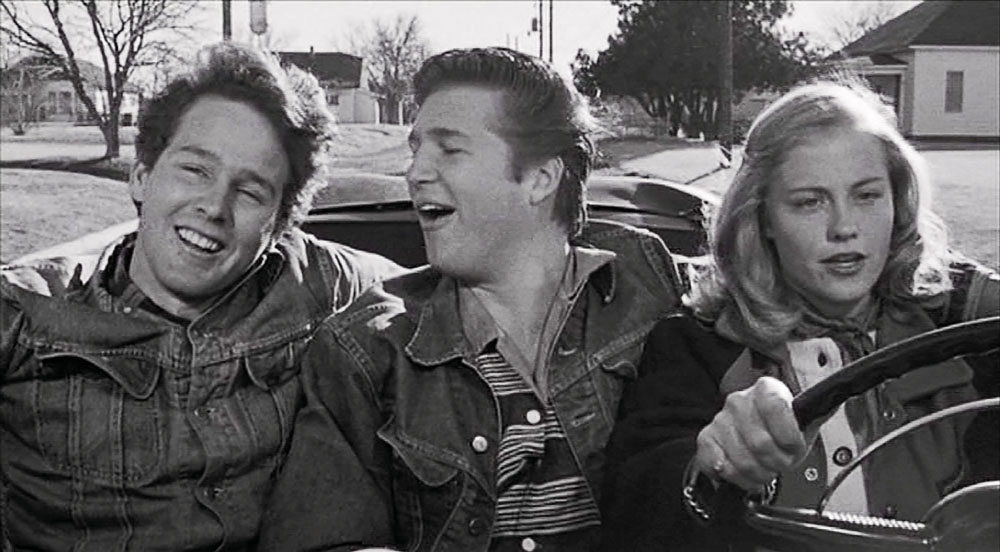
JASON BAILEY’S 10 BEST DISC RELEASES OF 2023
As I hope you know, I write a little bi-weekly column here at the Marquee where I round up the week’s best new releases on DVD, Blu-ray, 4K Ultra HD, and the streaming services — but the emphasis is much more on the discs than the streamers, for reasons summarized in the most recent edition. But if you aren’t a regular reader of that feature, of if you’re just looking for some very last minute holiday gifts, here are some of the most essential new discs of the year.
10. T.R. Baskin: Every once in a while, Fun City Editions pops up with some memory-holed gem of ‘70s cinema that I’ve not only not seen but never even heard of, and it ends up being one of my favorite film discoveries of the year. Rancho Deluxe was one; this is another, a 1971 collaboration between director Herbert Ross and screenwriter Peter Hyams, with a career-highlight turn from Candace Bergen. She’s the title character, a girl from Ohio with a razor-sharp wit and an above-it-all air who moves to Chicago to find herself, which is easier said than done. The supporting players are tip-top, particularly a disarmingly vulnerable Peter Boyle and a cool-as-a-cucumber James Caan, but this is Bergen’s show, and she owns it — her bone-dry delivery and wry cynicism, such a comic weapon on Murphy Brown, are well-deployed here, and when she finally, truly lets her guard down at the story’s conclusion, it lands like a haymaker.
9. To Live and Die in L.A.: We lost the great William “Hurricane Billy” Friedkin this year, and there’s no better way to honor his legacy than by snorting up this breathless 1985 cops (okay, customs agents) movie; it got the 4K treatment from KL Studio Classics, upgrading from Blu-ray in all its sleazy, sweaty, coked-up glory. William Petersen does the cocky loose-canon thing with grinning glee, Willem Dafoe is chillingly creepy (even by Willem Dafoe standards), and Friedkin marshals a peerless ensemble of terrific ‘80s character actors (John Turturro, Dean Stockwell, John Pankow, Darlanne Fluegel, among them). The mood is squirrelly and the plotting is tight, and Friedkin works up a car chase that gives even his classic French Connection a run for his money, with Petersen barreling down an L.A. freeway in the wrong direction. It’s a great set piece, and a first-rate action flick all around.
8. Moonage Daydream: This fiercely energetic David Bowie bio-doc (new to the Criterion Collection) is the work of Brett Morgan, one of the few pop culture documentarians who is trying to expand and experiment with the form. By his own admission, Bowie “spent a lot of my life actually looking for myself”; it wasn’t a life that moved in a straight line, so an account of it shouldn’t either. There’s biographical information, sure, and some sense of chronology, but it’s unpacked thematically, in musical and cinematic movements, via scorching concert footage, documentary odds and ends, archival interviews, stock footage, clips from his films, experimental videos, and more. Morgan juxtaposes and manipulates the images in unexpected ways, and does similar magic with the music; Criterion’s 4K disc looks great but sounds spectacular, making these timeless songs sound new all over again.
7. Midnight Run: “What’re ya, a comedian?” a cab driver asks Robert De Niro in the closing scene of this 1988 action/comedy (getting the 4K upgrade from Shout! Factory), and it plays like a bit of wink – because back then, the idea of Method man De Niro using his tough-guy persona at the service of laughs was still a novelty. But it’s a funny performance, without ever trying to be; George Gallo’s screenplay merely bounces him off fussy Mob accountant Charles Grodin, and watches the sparks. Grodin is the more conventionally comic performer, of course, and he has several funny bits, but he and De Niro have the timing and byplay of a good comedy team, which is the kind of thing it’s hard to manufacture. Director Martin Brest takes what could’ve been a conventional action picture on the order of his previous hit Beverly Hills Cop – and to be sure, it’s got plenty of car chases, shoot-outs, fist fights, chopper attacks, and Mob snipers – but it all serves the central relationship, and he never rushes his performers through the personal beats and slow burns that are, ultimately, the movie’s heart.
6. Rio Bravo: Howard Hawks’s 1959 Western was one of the first movies I ever saw on Blu-ray, and the gorgeous views of the scenic vistas really underlined what the format could do. That holds even more true with this new 4K edition, though what’s most striking and memorable about the picture are its indoor scenes—the quiet camaraderie within its motley crew of mismatched central characters, killing time in the county jail, waiting for the bad guys to show up. The term “hang-out movie” gets thrown around a lot these days, but this is the quintessential hang-out movie; the characters are clearly defined, the relationships knotty and nuanced, the scene set with offhand precision by the master, Mr. Hawks. It’s one of John Wayne’s best performances (and certainly his most relaxed), and maybe the best work Dean Martin ever did onscreen.
5. The Ranown Westerns – Five Films Directed by Budd Boetticher: These Western programmers, all starring Randolph Scott and directed by Budd Boetticher in the late 1950s, were part of a quiet but ongoing movement to rethink and reimagine what the Western was, and what it could be, even as the more mainstream oaters of film and television continued in much the same key as they had for decades. Lean and mean (none of them run over 80 minutes), they carved out their own particular niche, their own specific way of telling a story, and serving a persona. Watching them together, in Criterion’s must-have box set, makes them feel like a TV series; an anthology, perhaps, as Scott isn’t playing exactly the same character in each one. But he’s playing variations on one, a similar kind of man, usually something like but not precisely a man of the law. By the later entries, our familiarity with the actor, the director, and the frequent screenwriter Burt Kennedy has the same effect as watching a show, and the baggage they bring in fills in the blanks.
4. After Hours: In 1984, Martin Scorsese was about to fulfill a decade-long dream to make The Last Temptation of Christ—only to have Paramount pull the plug at the eleventh hour, terrified by the protests and threats of evangelicals. Devastated by the cancellation, he had to throw himself into a new project, immediately (“I’ve got to work. I’ve got to do something,” he remembered saying). And he wound up making this pitch-black, Kafka-esque comedy, in which a numbers cruncher (Griffin Dunne) is swallowed whole by Soho over one long, very weird night. It’s a funny and peculiar picture, yet also one of Scorsese’s most energetic; you can feel that spirit of working to stay sane in nearly every askew frame of this witty, energetic, and fast-paced picture. It’s languished in DVD purgatory for years, never even getting a Blu-ray release, so Criterion’s combo 4K/Blu-ray was cause for celebration. Care for some Mr. Softee Ice Cream?
3. Hugo: A doff of the cap to the fine folks at Arrow Video, who have not only given Scorsese’s combination children’s adventure/intro to cinema class a lovely 4K upgrade, but have included a 3D Blu-ray edition to boot (Scorsese is one of the few filmmakers in the ill-advised 3D revival to use it as an immersion tool and not a goofy gimmick). But Hugo is such a delightful charmer that it doesn’t even need all those bells and whistles. Take them away, and you’ve got a tender story of a lonely kid, the warm tale of his budding friendship with a spectacular girl, and yet another pitch-perfect Ben Kingsley performance. What a picture!
2. Soundies: The Ultimate Collection: They made “soundies” in the early 1940s, specifically for coin-operated “Panorams”—visual jukeboxes in neighborhood bars, which played these musical shorts on 16mm film. The lineage to music videos is crystal clear, but this remarkable collection (assembling over 200 vintage soundies, totaling 10 hours) isn’t as simplistic as all that. Curated and hosted by historian Susan Delson, the shorts are organized by themes, styles, and periods, noteworthy not only for the music they’ve preserved (no small achievement, considering how many capture Black artists in their prime), but for what their presentation is telling us about music, race, and culture between the notes.
1. The Last Picture Show / Texasville: The Criterion Collection’s 4K upgrade to their essential edition of Peter Bogdanovich’s career-making 1971 adaptation of Larry McMurtry’s novel is cause enough for celebration — Robert Surtees’s gorgeous black-and-white cinematography has never looked more melancholy or luminous, especially now that Picture Show is a double period piece (it was only set 20 years in the past when it was released, but that was 50-plus years ago now). And the film itself retains its considerable power, a quintessential New Hollywood re-interrogation of our cultural perceptions and nostalgia. But just as momentous is the three-disc set’s inclusion of Texasville, Bogdanovich’s 1990 sequel, mostly maligned at the time but now clearly an undiscovered gem, particularly in its longer, black-and-white director’s cut. Though the focus is primarily on Jeff Bridges and Cybill Shepard, the extra time allows Bogdanovich to create a sense of community, drawing from a deep bench of both returning players (Timothy Bottoms breaks your heart) and fresh additions (Annie Potts is especially noteworthy). Taken together, they have much to say about small-town life and American ennui in the mid-to-late 20th century; they’re also sad, funny, and lovely.

